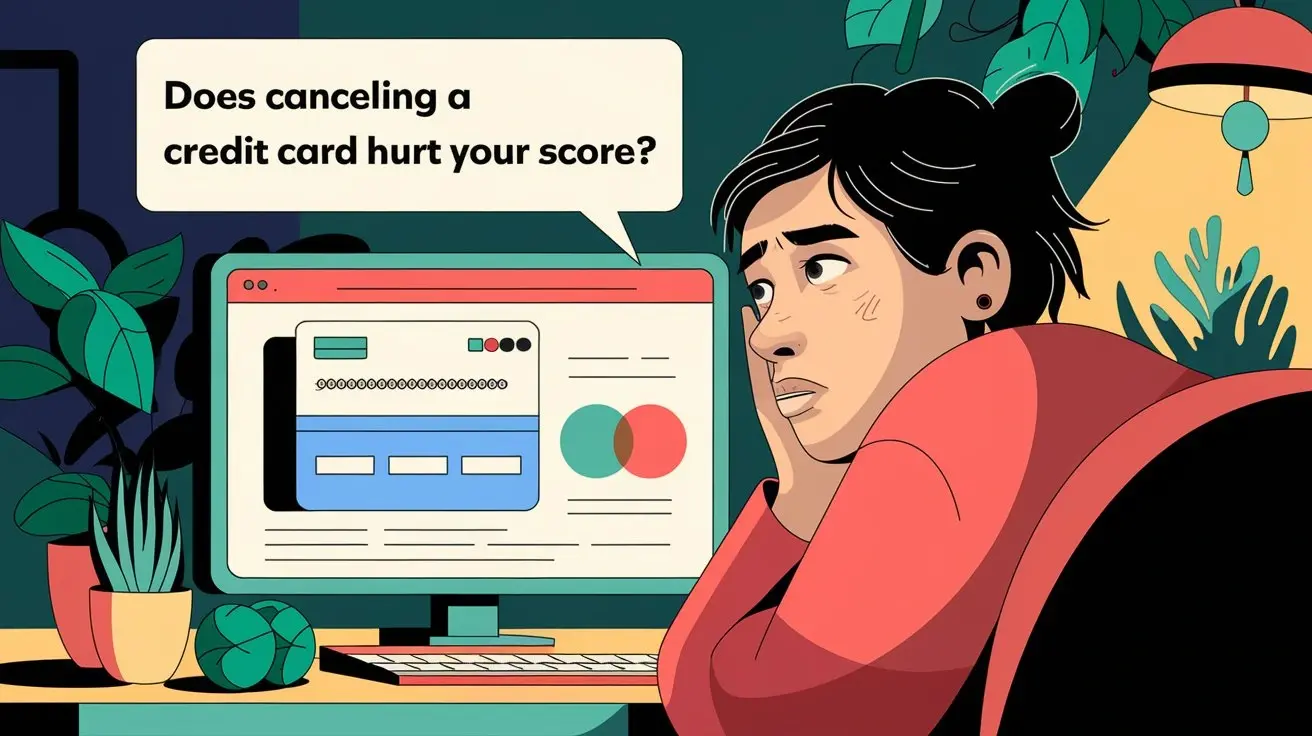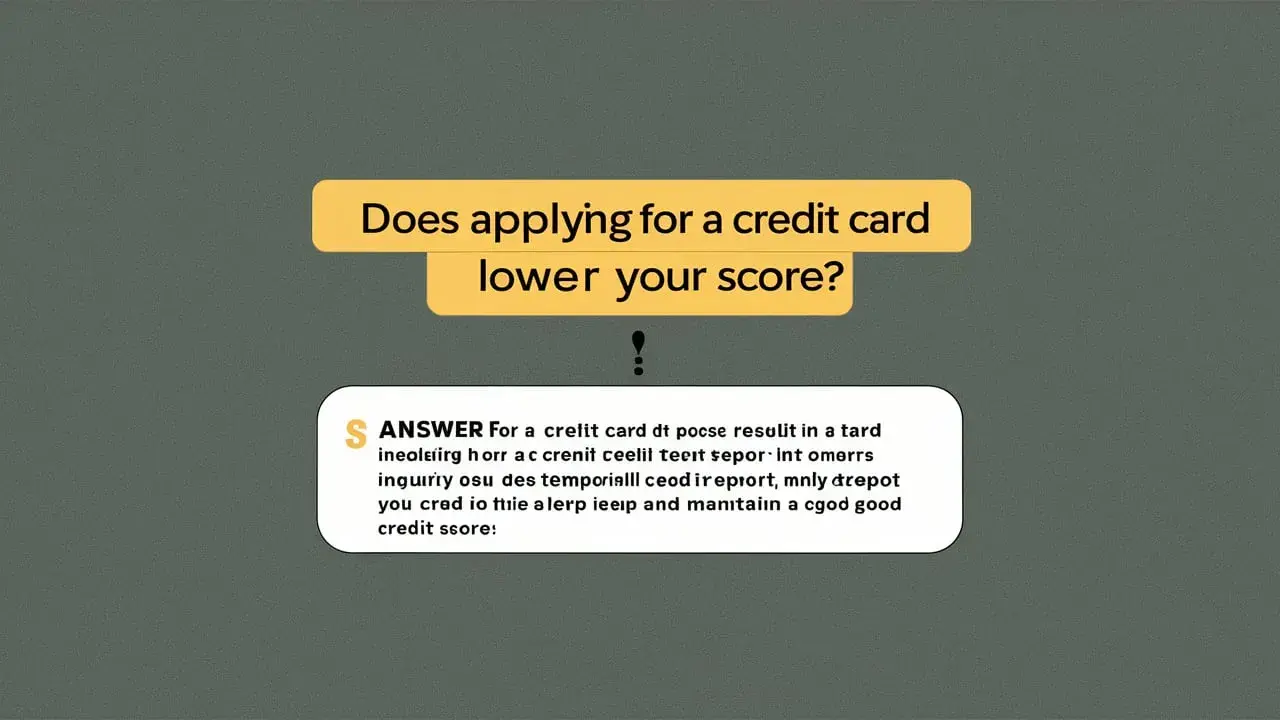-
Posted on: 01 Mar 2023

-
Securing your first credit card at a young age is a pivotal step towards financial independence. This guide will demystify the process, providing clear, actionable steps and insights for 2025, empowering you to build a strong credit foundation early on.
Why Getting Your First Credit Card Young Matters
The decision to obtain a credit card at a young age, often during late teens or early twenties, is more than just acquiring a plastic rectangle. It's about strategically laying the groundwork for a healthy financial future. In 2025, understanding the power of credit is paramount. A good credit score isn't just for loans; it influences everything from renting an apartment and securing a job to obtaining favorable insurance rates and even getting a cell phone plan without a hefty deposit. Starting early allows you to benefit from the longest possible credit history, a significant factor in credit scoring models.
The earlier you begin establishing a positive credit history, the more time you have to demonstrate responsible financial behavior. This translates into better opportunities and lower costs throughout your life. For instance, a higher credit score can mean thousands of dollars saved on interest over the life of a mortgage or car loan. Furthermore, learning to manage credit responsibly at a younger age instills crucial financial discipline, preventing potential debt traps and fostering a sense of financial maturity.
Consider the landscape in 2025: the economy is increasingly digital, and financial literacy is more critical than ever. Young adults who can navigate credit responsibly are better positioned to achieve their financial goals, whether it's buying a car, pursuing higher education, or investing in their future. This guide aims to equip you with the knowledge and strategies to achieve just that.
The Long-Term Benefits of Early Credit Building
The benefits of starting early are cumulative and far-reaching. A consistent history of responsible credit use, even with a secured card or as an authorized user, begins to build a credit profile that lenders can assess. This profile is then used by various entities to gauge your trustworthiness with financial obligations.
- Lower Borrowing Costs: Over decades, a strong credit score can save you tens of thousands of dollars in interest on major purchases like homes and cars. In 2025, with fluctuating interest rates, this is more crucial than ever.
- Easier Approvals: From apartment leases to utility services, a good credit history often means no security deposits and smoother application processes.
- Access to Better Financial Products: Premium credit cards with rewards, travel perks, and lower interest rates become accessible sooner.
- Financial Resilience: Having access to credit responsibly can provide a safety net for unexpected emergencies.
- Demonstrated Responsibility: A good credit score is often seen as a proxy for reliability and maturity, which can be advantageous in various aspects of life.
Credit Scores: What They Are and Why They Matter
A credit score is a three-digit number, typically ranging from 300 to 850, that represents your creditworthiness. It's a snapshot of your financial behavior, indicating how likely you are to repay borrowed money. The most common scoring model is the FICO score, but VantageScore is also widely used.
In 2025, credit scoring models are sophisticated. They primarily consider:
- Payment History (35%): This is the most critical factor. Paying bills on time, every time, is essential.
- Amounts Owed (30%): This refers to your credit utilization ratio – the amount of credit you're using compared to your total available credit. Keeping this low (ideally below 30%) is vital.
- Length of Credit History (15%): The longer you've had credit accounts and managed them well, the better. This is where starting young pays off.
- Credit Mix (10%): Having a mix of different credit types (e.g., credit cards, installment loans) can be beneficial, but it's less important than payment history and amounts owed.
- New Credit (10%): Opening too many new accounts in a short period can temporarily lower your score.
Understanding these components is the first step to strategically building a good credit score from the outset.
Understanding Eligibility Requirements
Getting your first credit card, especially at a young age, comes with specific eligibility criteria. Lenders need to assess the risk associated with extending credit to someone with little to no credit history. For individuals under 21, there are additional regulations in place designed to protect them from accumulating unmanageable debt.
Age Requirements
The most fundamental requirement is age. In the United States, federal law (the Credit CARD Act of 2009) stipulates that individuals must be at least 18 years old to enter into a credit card contract independently. However, simply being 18 doesn't guarantee approval. For applicants under 21, there's a crucial additional requirement:
- Proof of Independent Income: Applicants under 21 must demonstrate that they have the means to repay the credit they are granted. This means showing a verifiable, independent income stream that is sufficient to cover the minimum payments and reasonable spending habits. This income must not be solely reliant on a co-signer or parental support. Lenders will typically ask for details about your employment, salary, and the duration of your employment.
For those under 18, obtaining a credit card independently is generally not possible. However, there are still ways to start building credit, which we will discuss later.
Income and Employment Verification
Lenders are primarily concerned with your ability to repay. Therefore, proving a stable and sufficient income is critical. This doesn't mean you need a high-paying job, but rather a consistent one.
- What Constitutes "Independent Income"? This refers to earnings you receive from your own work or investments, not money you receive as a gift or allowance from family members.
- Documentation: Be prepared to provide documentation such as pay stubs, tax returns, or bank statements showing regular deposits. Freelancers or gig workers might need to provide invoices or contracts.
- Minimum Income Thresholds: While there isn't a universal minimum income, lenders have internal thresholds. For example, a card with a low credit limit might require an annual income of $5,000-$10,000, while a card with a higher limit might demand more. These figures are estimates for 2025 and can vary significantly by issuer.
If your income is inconsistent, consider options like secured credit cards or becoming an authorized user, which often have less stringent income requirements.
The Role of a Co-signer (and its Limitations)
In some cases, a co-signer can help an applicant under 21 get approved for a credit card. A co-signer is typically a parent or guardian with good credit who agrees to be legally responsible for the debt if the primary cardholder fails to pay. However, the Credit CARD Act of 2009 has placed restrictions on co-signers for credit cards issued to individuals under 21.
- Independent Income Still Required: Even with a co-signer, applicants under 21 must still demonstrate their own independent ability to repay the debt. The co-signer's income is not a substitute for the applicant's.
- Co-signer's Responsibility: It's crucial for both the applicant and the co-signer to understand that the co-signer's credit score will be impacted by the primary cardholder's payment behavior. Late payments or defaults will appear on the co-signer's credit report.
- Limited Availability: Many issuers have phased out co-signer options for credit cards due to the regulatory requirements.
While a co-signer can sometimes bridge the gap, it's not a guaranteed solution and carries significant implications for the co-signer.
Types of Credit Cards for Young Applicants
Navigating the world of credit cards can be daunting. For young individuals, certain types of cards are specifically designed to help build credit history without the high risks or requirements of traditional unsecured cards. In 2025, these options remain the most accessible and effective for beginners.
Secured Credit Cards
Secured credit cards are often the most straightforward entry point for young applicants with no credit history. They require a cash deposit, which typically becomes the credit limit for the card.
- How They Work: You provide a refundable security deposit (e.g., $200, $300, $500) to the credit card issuer. This deposit acts as collateral, significantly reducing the lender's risk. If you fail to make payments, the issuer can use the deposit to cover the outstanding balance.
- Benefits:
- High Approval Rates: Because they are secured, approval rates are very high, even for those with no credit history.
- Builds Credit: Responsible use (making on-time payments) is reported to credit bureaus, helping you build a positive credit history.
- Low Fees: Generally have lower annual fees compared to some unsecured cards.
- Downsides:
- Requires a Deposit: You need to have the cash available upfront.
- Low Credit Limits: The credit limit is usually equal to your deposit, meaning it's often quite low.
- Limited Rewards: Typically do not offer significant rewards programs or perks.
- Example (Hypothetical 2025 Card): The "Starter Secured Card" might require a $300 deposit for a $300 credit limit, with a $0 annual fee and reporting to all three major credit bureaus.
Student Credit Cards
These cards are specifically tailored for college students, often with slightly more lenient approval requirements than standard unsecured cards. They are designed to help students build credit while in school.
- Target Audience: Primarily for undergraduate students enrolled in a degree program.
- Benefits:
- Easier Approval: Often designed for individuals with limited or no credit history.
- Student-Focused Rewards: May offer rewards relevant to students, like cash back on dining or gas, or discounts with specific retailers.
- Credit Building: Report payment activity to credit bureaus.
- Downsides:
- Lower Credit Limits: Typically come with modest credit limits.
- Potential Fees: Some may have annual fees, though many are fee-free.
- Requires Student Status: Only available to enrolled students.
- Example (Hypothetical 2025 Card): The "Campus Cash Card" could offer 3% cash back on dining and 1% on all other purchases, with a $500 starting credit limit, and no annual fee for students with a valid .edu email address.
Credit Builder Loans
While not a credit card, a credit builder loan is another excellent tool for establishing credit history. These are small loans designed specifically for credit building.
- How They Work: You make payments on the loan, but the loan amount is held in a savings account by the lender. Once you've paid off the loan, the money is released to you.
- Benefits:
- Guaranteed Credit Building: Your payment history is reported to credit bureaus.
- Savings Component: You end up with savings after completing the loan term.
- Low Risk: The lender holds the funds, minimizing their risk.
- Downsides:
- No Immediate Access to Funds: You don't get the money until the loan is fully repaid.
- Interest Paid: You will pay interest on the loan.
- Example (Hypothetical 2025 Product): A "CreditStart Loan" might offer a $500 loan with a 12-month term, requiring monthly payments of approximately $45, with the $500 released at the end.
Authorized User Status
Becoming an authorized user on a trusted individual's credit card (usually a parent or guardian) is another way to gain exposure to credit. Their positive payment history can be added to your credit report.
- How It Works: A primary cardholder adds you to their existing credit card account. You receive a card with your name on it, and you can make purchases.
- Benefits:
- Leverages Existing Credit History: The primary cardholder's positive payment history and the age of the account can be added to your credit report, potentially boosting your score.
- No Application Required: You don't need to apply or meet income requirements yourself.
- Downsides:
- Dependence on Primary User: Your credit is tied to the primary cardholder's behavior. Their mistakes (late payments, high balances) will negatively impact your credit.
- Limited Control: You have little control over the account's spending or payment habits.
- Issuer Policies Vary: Not all issuers report authorized user activity to credit bureaus, or they may report it differently.
It's crucial to discuss this option thoroughly with the primary cardholder and ensure they are financially responsible.
The Application Process: Step-by-Step
Applying for your first credit card might seem intimidating, but by breaking it down into manageable steps, you can approach it with confidence. The key is preparation and understanding what lenders are looking for, especially for young applicants in 2025.
Step 1: Assess Your Financial Situation and Goals
Before you even start looking at cards, take stock of where you stand financially and what you hope to achieve with a credit card.
- Income: Honestly evaluate your reliable, independent income. Can you afford to make at least the minimum payments each month?
- Spending Habits: How do you plan to use the card? For emergencies? For building credit with small, manageable purchases? For specific rewards?
- Credit Goals: Are you primarily focused on building a credit score from scratch, or do you have a specific purchase in mind (e.g., a new laptop) that you want to finance responsibly?
- Risk Tolerance: Are you comfortable with a secured card requiring a deposit, or are you aiming for a student card with potentially higher limits but stricter approval?
This self-assessment will help you narrow down the types of cards and specific offers that are most suitable for you.
Step 2: Research and Compare Card Options
Once you know what you're looking for, it's time to research specific credit card offers. Don't just pick the first card you see.
- Focus on Beginner-Friendly Cards: Prioritize secured cards, student cards, or cards that explicitly state they are for building credit.
- Compare Key Features:
- Annual Fee: Aim for cards with no annual fee, especially when starting out.
- Interest Rate (APR): While ideally, you'll pay your balance in full each month, a lower APR is better if you anticipate carrying a balance occasionally.
- Credit Limit: Understand the potential credit limit. For secured cards, it's your deposit. For others, it might be modest.
- Rewards and Perks: If available, consider if the rewards align with your spending habits. Don't let rewards distract you from responsible usage.
- Reporting to Credit Bureaus: Ensure the card issuer reports to all three major credit bureaus (Equifax, Experian, and TransUnion). This is non-negotiable for credit building.
- Read the Fine Print: Pay close attention to terms and conditions, including late fees, over-limit fees, and any introductory offers.
Online comparison tools and financial websites can be invaluable resources. Look for reputable sources that provide up-to-date information for 2025.
Step 3: Gather Necessary Documentation
Having your information ready will make the application process smoother.
- Personal Information: Full legal name, date of birth, Social Security number (SSN).
- Contact Information: Current address, phone number, email address.
- Income Information: Your annual income, employment status, and employer's name and address (if applicable). Be prepared to provide proof if requested (pay stubs, bank statements).
- Housing Information: Whether you rent or own, and your monthly housing payment.
For secured cards, you'll also need information about the deposit amount you intend to make.
Step 4: Complete the Application
Most credit card applications are now completed online. Take your time and fill out the form accurately and completely.
- Be Honest: Never provide false information. This can lead to application denial and potential legal issues.
- Double-Check Everything: Before submitting, review all the information for any errors. A typo in your SSN or address can cause problems.
- Understand the Hard Inquiry: Applying for credit typically results in a "hard inquiry" on your credit report. While one or two inquiries won't significantly damage your score, applying for many cards at once can.
Step 5: Await the Decision and Next Steps
Once submitted, you'll usually receive an instant decision online for many applications. If approved, you'll receive details about your credit limit, APR, and when to expect your card in the mail.
- If Approved: Congratulations! Follow the instructions to activate your card and set up your online account.
- If Denied: Don't be discouraged. You have rights. The issuer must send you an "adverse action notice" explaining the reasons for denial. Review this notice carefully. Common reasons for denial for young applicants include insufficient income, lack of credit history, or too many recent credit inquiries. Use this feedback to improve your situation before reapplying or trying a different type of card. You can also request a free copy of your credit report to check for errors.
Remember, the goal is to get approved for a card that you can manage responsibly. It might not be the most premium card, but it's the first step on a long journey.
Building Credit Wisely: Best Practices
Getting approved for your first credit card is a significant achievement, but it's only the beginning. The real work lies in using that card responsibly to build a strong, positive credit history. In 2025, the principles of good credit management remain consistent and are crucial for long-term financial health.
1. Pay Your Bill On Time, Every Time
This is the single most important factor in your credit score. Payment history accounts for approximately 35% of your FICO score.
- Set Up Auto-Pay: Automate minimum payments to ensure you never miss a due date. However, always monitor your account to ensure sufficient funds are available.
- Set Reminders: Use calendar alerts or phone reminders a few days before the due date.
- Pay More Than the Minimum: While paying only the minimum is better than missing a payment, it's financially beneficial to pay more whenever possible to reduce interest charges and pay down the principal faster.
2. Keep Your Credit Utilization Low
Credit utilization (the amount of credit you're using compared to your total available credit) accounts for about 30% of your score. Aim to keep this ratio below 30%, and ideally below 10%.
- Understand Your Limit: If your credit limit is $500, try to keep your balance below $150 (30%).
- Make Multiple Payments: If you anticipate exceeding your ideal utilization, make payments throughout the billing cycle, not just before the statement due date. This can help lower the reported balance.
- Avoid Maxing Out: Never max out your credit card. This signals to lenders that you are financially strained.
3. Monitor Your Credit Report Regularly
Your credit report is a detailed record of your credit history. It's essential to review it periodically for accuracy and to track your progress.
- Free Annual Reports: You are entitled to a free credit report from each of the three major credit bureaus (Equifax, Experian, TransUnion) once every 12 months at AnnualCreditReport.com.
- Check for Errors: Look for any accounts you don't recognize, incorrect payment statuses, or other inaccuracies.
- Dispute Errors: If you find errors, dispute them immediately with the credit bureau and the creditor.
- Free Credit Monitoring Services: Many credit card issuers and financial institutions offer free credit score monitoring services, which can alert you to significant changes.
4. Understand Your Credit Limit and Spending
Your credit limit is not a spending target. It's the maximum amount you can borrow.
- Treat it as a Tool, Not Free Money: Only spend what you can afford to pay back.
- Avoid Impulse Purchases: Think carefully before making a purchase with your credit card.
- Build Towards Higher Limits (Cautiously): As you demonstrate responsible behavior, issuers may gradually increase your credit limit. This can be beneficial for lowering your credit utilization ratio, but only if your spending remains controlled.
5. Keep Old Accounts Open (If Fee-Free)
The length of your credit history is a factor in your credit score. Keeping older, well-managed accounts open, even if you use them infrequently, can benefit your score.
- Impact on Average Age: Closing an old account can reduce the average age of your credit history.
- Maintaining Available Credit: Older accounts often have higher credit limits, which contributes to your overall available credit and can help keep your utilization ratio low.
- Use Sparingly: If an old card has no annual fee, make a small purchase on it every few months and pay it off immediately to keep it active.
6. Avoid Applying for Too Much Credit at Once
Each time you apply for credit, a hard inquiry is placed on your credit report, which can temporarily lower your score. Multiple inquiries in a short period can be a red flag to lenders.
- Strategic Applications: Only apply for credit when you genuinely need it and have a good chance of approval.
- Shopping Around: If you're shopping for a loan (like a car loan), lenders often allow a grace period (typically 14-45 days, depending on the scoring model) for multiple inquiries of the same type to be treated as a single one. This doesn't apply as much to credit card applications.
By consistently following these best practices, you'll be well on your way to establishing and maintaining an excellent credit score, opening doors to better financial opportunities throughout your life.
Common Pitfalls to Avoid
While building credit is a positive step, the journey is fraught with potential missteps, especially for young individuals new to credit. Understanding these common pitfalls can help you steer clear of costly mistakes and protect your nascent credit score in 2025 and beyond.
1. Missing Payments
As mentioned, this is the most damaging mistake. A single missed payment can significantly drop your credit score and remain on your report for up to seven years.
- Consequences: Late fees, penalty APRs (often much higher than your regular APR), and a severe hit to your credit score.
- Prevention: Set up automatic payments, use calendar reminders, and always ensure you have sufficient funds in your bank account. If you do miss a payment, rectify it immediately.
2. High Credit Utilization
Using too much of your available credit signals financial distress to lenders. Keeping your balance high relative to your credit limit is a common mistake.
- Example: A $200 balance on a $500 credit limit is 40% utilization, which is considered high.
- Prevention: Pay down your balance regularly, ideally before the statement closing date. Consider requesting a credit limit increase once you've demonstrated responsible use, which can lower your utilization ratio if your spending remains the same.
3. Applying for Too Many Cards Too Soon
The allure of sign-up bonuses or the desire to have multiple cards can lead young applicants to apply for several cards within a short period. This results in multiple hard inquiries and can make you appear desperate for credit.
- Consequences: Lowered credit score due to inquiries and potentially being denied for all applications.
- Prevention: Focus on getting approved for one or two suitable cards first. Master responsible use before seeking additional credit.
4. Not Understanding Fees
Credit cards come with various fees – annual fees, late fees, over-limit fees, foreign transaction fees, balance transfer fees, cash advance fees. Failing to understand these can lead to unexpected costs.
- Example: A $30 annual fee on a card might seem small, but it adds to the cost of credit. A $40 late fee can be substantial.
- Prevention: Read the cardholder agreement carefully. Opt for cards with no annual fees when possible. Always pay on time to avoid late fees.
5. Carrying a Balance and Paying Interest
The primary goal of responsible credit card use is to pay your balance in full each month. Carrying a balance means you're borrowing money, and you'll be charged interest, often at a high rate.
- The Cost of Interest: High APRs can quickly negate any rewards earned and significantly increase the total cost of your purchases.
- Prevention: Treat your credit card like a debit card – only spend what you can afford to pay off immediately. If you must carry a balance, aim to pay more than the minimum to reduce the principal and interest charges faster.
6. Relying Solely on a Co-signer or Authorized User Status
While these can be helpful starting points, they are not long-term solutions for building your own independent credit profile.
- Dependence: Your credit history becomes dependent on someone else's financial behavior.
- Limited Growth: You don't develop the skills and experience of managing your own credit account.
- Prevention: Aim to transition to your own unsecured credit card as soon as you meet the eligibility requirements.
7. Falling for "Too Good To Be True" Offers
Be wary of offers that promise instant approval with no credit check or extremely high credit limits for individuals with no history. These are often scams or come with predatory terms.
- Red Flags: Requests for upfront fees for approval, promises of guaranteed approval regardless of credit, or extremely high interest rates.
- Prevention: Stick to reputable issuers and well-known card products. If an offer seems too good to be true, it probably is.
Avoiding these common pitfalls requires diligence, education, and a commitment to responsible financial habits. By being aware of these traps, you can navigate the credit landscape successfully.
Alternative Paths to Building Credit
While credit cards are the most common tool for building credit, they aren't the only option, especially for those under 18 or struggling to qualify for a card. In 2025, several alternative avenues can help you establish a credit history.
1. Become an Authorized User (Revisited)
We touched on this earlier, but it bears repeating as a key alternative. If a trusted parent or guardian has a well-managed credit card, they can add you as an authorized user.
- How it Helps: The primary cardholder's positive payment history and the age of their account can be reported to your credit file, helping to establish a credit history.
- Key Considerations: Ensure the primary cardholder is financially responsible and that the issuer reports authorized user activity to the credit bureaus. Discuss expectations clearly.
2. Credit Builder Loans
These are specifically designed to help individuals build credit. You make payments on a small loan, but the funds are held in an account by the lender until the loan is paid off.
- How it Helps: Your on-time payments are reported to the credit bureaus, demonstrating your ability to manage debt.
- Benefits: You also end up with savings.
- Where to Find Them: Many credit unions and some community banks offer these loans.
3. Rent Reporting Services
Historically, rent payments did not affect credit scores. However, in 2025, several services allow you to have your on-time rent payments reported to credit bureaus.
- How it Helps: This can add a significant positive entry to your credit report, especially if you have a consistent rent payment history.
- Services: Examples include Experian RentBureau, CreditRentBoost, and others that partner with landlords or property management companies. Some may require a fee.
- Limitations: Not all lenders weigh rent payments as heavily as traditional credit accounts, but it's a valuable supplement.
4. Utility Bill Reporting
Similar to rent, some services can report your on-time payments for utilities (electricity, gas, water, phone, internet) to credit bureaus.
- How it Helps: Demonstrates consistent payment behavior for essential services.
- Services: Providers like Experian Boost and UltraFICO can incorporate these payments into your credit score calculation.
- Requirements: You typically need to link your bank accounts or provide utility bills to these services.
5. Secured Loans or Other Collateralized Debt
If you have an asset you can use as collateral (like a car or savings account), you might be able to secure a loan with more favorable terms and build credit.
- How it Helps: Lenders are more willing to extend credit when there's collateral. On-time payments are reported.
- Considerations: You risk losing the collateral if you default on the loan.
6. Student Loans (for those in higher education)
While not ideal for credit building alone, federal student loans, when managed responsibly, can contribute to your credit history.
- How it Helps: Your repayment history on student loans is reported to credit bureaus.
- Caution: These are significant debts, and responsible repayment is crucial. They are not a tool to be taken lightly.
Exploring these alternative paths can be particularly beneficial if you are under 18, have a low income, or have faced challenges qualifying for traditional credit cards. Combining several of these methods can create a robust credit profile even before you get your first independent credit card.
Conclusion: Your Financial Future Starts Now
Securing your first credit card at a young age is a strategic move that can profoundly impact your financial future. By understanding the eligibility requirements, exploring the right types of cards like secured or student options, and meticulously following the application process, you are setting yourself up for success. The key takeaway from 2025's financial landscape is that responsible credit management is not just about avoiding debt; it's about actively building a strong financial foundation. Prioritize on-time payments, keep credit utilization low, and monitor your credit reports diligently. Avoid common pitfalls like missing payments or accumulating high balances. If traditional cards are out of reach, explore alternative paths such as becoming an authorized user, using credit builder loans, or leveraging rent and utility reporting services. Your financial journey begins with informed decisions and consistent, responsible actions. Start today, and build a credit history that opens doors to opportunities for years to come.











